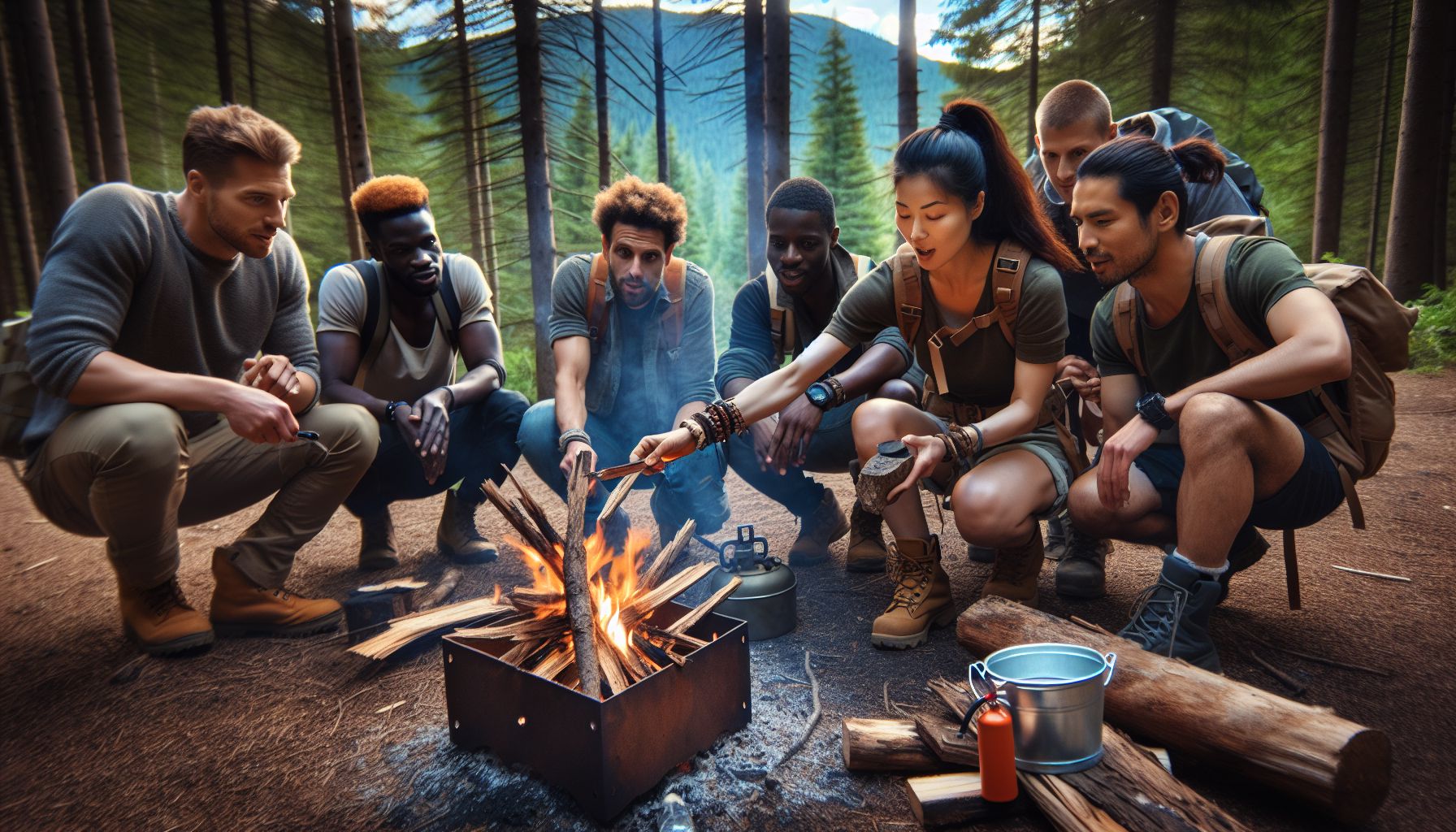How to Safely Start a Fire in the Wild: A Guide for Adventure Seekers

Introduction
Exploring the wilderness can be an exhilarating and eye-opening experience for adventure seekers. However, one must always be prepared for any situation that may arise, including the need for warmth or cooking. In such circumstances, knowing how to start a fire in the wild is an essential skill that every outdoor enthusiast should possess. In this educational guide, we will walk you through the necessary steps to safely start a fire, ensuring you can enjoy a memorable adventure while also staying safe.
Body
Step 1: Find a Suitable Location
Before you start a fire, it is crucial to find an appropriate location to set it up. Look for a clear and open spot away from any flammable materials such as fallen leaves, branches, or dry grass. This way, you minimize the risk of the fire spreading uncontrollably.
Step 2: Gather Your Materials
Next, gather the necessary materials needed to start a fire. The three basic components are tinder, kindling, and fuel. Tinder refers to easily ignitable materials like dry grass, leaves, or bark shreds. Kindling includes small sticks and twigs, while fuel consists of larger logs and branches. It is advisable to gather more materials than you initially anticipate needing to ensure a successful fire-starting endeavor.
Step 3: Prepare the Fire Pit
Create a fire pit by clearing a small area, approximately three feet in diameter. Dig a shallow hole and surround it with rocks or stones, acting as a boundary to contain the fire. This keeps the fire controlled and avoids any accidental spread.
Step 4: Arrange the Materials
Begin by placing the tinder in the center of the fire pit. This serves as the initial ignition material. On top of the tinder, carefully arrange the kindling in a cone-like shape, ensuring to leave gaps for air circulation. Finally, lay the fuel on top of the kindling, making sure there is enough space for oxygen to reach the fire once started.
Step 5: Ignite the Fire
To ignite the fire, you can use a variety of methods, such as matches, a lighter, or a fire starter. When using matches or a lighter, light the tinder from multiple angles to ensure a faster and more even burn. If you are using a fire starter, strike it against a rough surface to create sparks and ignite the tinder. Once the tinder catches fire, carefully nurture and blow on it to help the flames spread to the kindling.
Step 6: Maintain and Control the Fire
Once your fire is burning steadily, it is time to maintain and control it. Add small sticks and twigs gradually as the flames grow stronger. Remember to feed the fire slowly, allowing each addition to catch fire before adding more. Keep an eye on the fire at all times, ensuring it remains within the fire pit and doesn’t spread to the surrounding area.
Step 7: Extinguish the Fire Properly
When you no longer require the fire, it is crucial to extinguish it thoroughly. Use water or sand to douse the flames and embers completely. Stir the ashes and embers with a stick to ensure there are no remaining hot spots. Only leave the area once you are absolutely certain that the fire is completely extinguished.
Conclusion
Starting a fire in the wild can be a crucial skill for adventure seekers, providing warmth, comfort, and a means to cook food. By following the steps outlined in this guide, you can safely start a fire while minimizing the risk of accidents or wildfires. Remember to always exercise caution and be responsible when handling fire in the wilderness. Embrace the beauty of nature, but do so with the utmost respect for its potential dangers. Happy exploring!